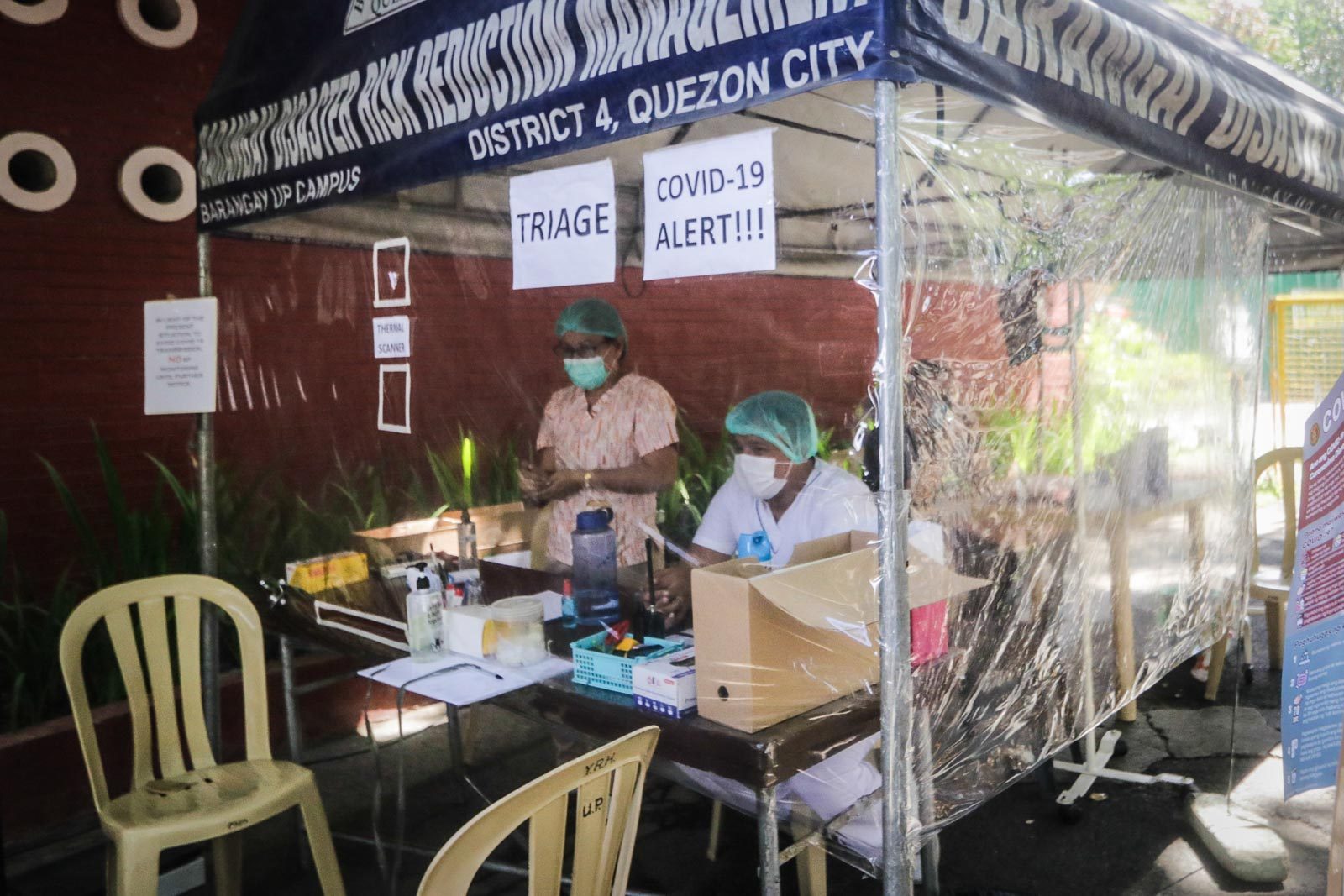SUMMARY
This is AI generated summarization, which may have errors. For context, always refer to the full article.

MANILA, Philippines – Weeks after public clamor for wider testing grew, the government’s coronavirus task force mapped out the steps that it will undertake to increase COVID-19 testing in the country to 20,000 per day by April 27.
Cabinet Secretary Karlo Nograles made the statement on Tuesday, April 7, as he enumerated how the government planned to increase the country’s “health capacity” to address the coranavirus disease pandemic.
Nograles cited experts who said that if the Philippines can manage coronavirus cases in the country, some 8,000 to 10,000 tests need to be carried out daily.
How will it be done? Nograles laid out the government’s proposed timeline to hit this target and later, the government’s goal to reach some 20,000 tests per day. The timeline is as follows:
- Maximize existing sub-national laboratories: Nograles said if the capacity of the 10 existing laboratories equipped to conduct testing is maximized, 2,600 to 7,000 tests can be done daily by April 13
- Certify more sub-national laboratories: With more laboratories able to test, Nograles said that by April 20, some 4,400 to 9,800 tests can be done per day
- Establish big testing centers in “strategic areas” nationwide: Nograles said testing sites all over the Philippines will be put up to add to the existing capacity of laboratories
“’Pag nagawa po natin yan, at lahat yan sabay-sabay, by April 27, aabot na po tayo to 13,000 to 20,000 tests per day (If we do all of that simultaneously, by April 27, we will reach 13,000 to 20,000 tests per day),” he said.
Along with ramping up the country’s testing capacity, the government’s coronavirus task force wanted to cut the turnaround time for tests – or the time it takes to give back results to a patient – to just 24 hours.
Nograles said this was one of the objectives behind the extended Luzon lockdown, which will now last until April 30, or over two weeks longer from the original April 12.
The government’s coronavirus task force, Nograles added, also approved the Department of Health’s (DOH) guidelines for mass testing. The task force will also “exhaust all means necessary” to increase the country’s testing capacity.
Is this mass testing? Still, while the government wants to increase the country’s testing capacity, not all people will be able to get tested.
Nograles said the priority will still be patients under investigation and persons under monitoring to avoid overwhelming the Philippines’ health facilities and laboratories.
“Uunahin po natin ‘yung mga kailangan…. ‘Pag sinabing mass testing…hindi po ibig sabihin, anybody can test. I-te-test ‘yung kinakailangan i-test (We will prioritize those who need [to be tested]…. When we say mass testing…this does not mean anybody can undergo testing. We will test those who need to be tested),” he said.
The order of priority in testing, he added, will be as follows:
- Patients under investigation showing severe symptoms and who have a history of travel or exposure to known coronavirus cases
- Patients with mild symptoms but are immuno-compromised and have a history of travel or exposure to known coronavirus cases
- Persons under monitoring showing mild symptoms and have a history of travel or exposure to known coronavirus cases
- Asymptomatic patients who have a history of travel or exposure to known coronavirus cases
Aside from suspected patients, frontliners and health workers will also be prioritized in testing.
“At the end of the day, kailangan may reason ka for testing. Hindi ‘yung basta-basta ka magtest kasi trip mo (At the end of the day, you need to have a reason for getting tested. You can’t just get a test because you want to),” Nograles said. (READ: When should you get tested for coronavirus?)
So far, the Philippines has tested a total of 20,092 individuals as of April 6. The DOH also said there were some 106,621 available test kits, where one test was equivalent to one person’s use.
Why this matters. Without mass testing and the Philippines’ testing capacity hampered by backlogs, experts warned that current data do not show an accurate and timely picture of the outbreak in the country.
For weeks, the government had been reluctant to carry out mass testing, citing a lack of test kits and laboratories that could process test results.
The government’s latest move expands the testing protocol to include more patients and coincides with its objective to identify as many carriers of the virus as possible and isolate them in national quarantine facilities. (READ: LIST: National coronavirus quarantine centers)
The strategy is reminiscent of South Korea’s widespread testing efforts where nearly 20,000 people are being tested every day, which is more people per capita than anywhere else in the world. – Rappler.com
Add a comment
How does this make you feel?
There are no comments yet. Add your comment to start the conversation.